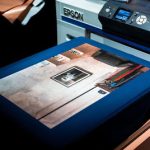The printing industry has come a long way from its origins, and it continues to evolve at a rapid pace. Innovations in technology are reshaping the landscape, offering new possibilities and transforming traditional practices. From advanced digital techniques to sustainable practices, the future of printing holds exciting prospects. Here are some of the key innovations shaping the industry today and in the years to come.
Digital Printing Advancements
Digital printing has revolutionized the industry by allowing for quick, cost-effective, and high-quality production. Recent advancements are pushing the boundaries even further:
- High-Speed Inkjet: Modern high-speed inkjet printers offer remarkable speed and quality, making them ideal for large-scale printing jobs. They are increasingly used in commercial printing for tasks that require both high volume and precision.
- Variable Data Printing (VDP): VDP allows for the customization of each printed piece within a single print run. This technology is particularly valuable for marketing materials, enabling personalized messages that can increase engagement and response rates.
3D Printing Revolution
3D printing, also known as additive manufacturing, is one of the most groundbreaking innovations in the industry. It allows for the creation of three-dimensional objects from digital files, layer by layer. The applications are vast:
- Prototyping and Manufacturing: 3D printing is widely used in prototyping, allowing designers and engineers to quickly produce and test new designs. It is also being adopted in manufacturing for creating complex parts and products that would be difficult or impossible to make with traditional methods.
- Healthcare: The medical field is benefiting from 3D printing with innovations such as custom prosthetics, implants, and even bioprinting tissues and organs.
Sustainable Printing Practices
Environmental concerns are driving the adoption of more sustainable practices within the printing industry:
- Eco-Friendly Inks: Soy-based and other vegetable-based inks are replacing traditional petroleum-based inks, reducing environmental impact.
- Recycled Materials: Using recycled paper and other materials helps to conserve resources and reduce waste.
- Energy-Efficient Processes: Advances in printing technology are leading to more energy-efficient equipment, reducing the carbon footprint of printing operations.
Hybrid Printing Technologies
Combining traditional printing methods with modern digital techniques is creating new opportunities:
- Hybrid Presses: These machines integrate digital printing with offset or flexographic printing, providing the benefits of both technologies. They are ideal for jobs that require high-quality graphics with the flexibility of digital customization.
- Embellishments and Textures: Digital printing is now capable of adding tactile effects, such as raised textures and metallic finishes, which were once only possible with traditional methods. This innovation is particularly useful for creating standout packaging and promotional materials.
Advanced Embroidery Integration
Embroidery, a classic form of textile decoration, is being enhanced by modern printing technologies:
- Digital Embroidery Machines: These machines can produce intricate and precise designs quickly. They are often used in conjunction with digital printing to create multi-dimensional and highly customized products.
- Combined Printing and Embroidery: Integrating embroidery with printing allows for unique combinations of textures and colors, providing a richer and more engaging visual experience. This approach is popular in fashion, branding, and promotional products.
Nanotechnology and Smart Inks
Nanotechnology is making its way into the printing industry, offering revolutionary changes:
- Nanoprinting: This technology enables printing at a microscopic level, which could have applications in electronics, medical devices, and more.
- Smart Inks: These inks change color or properties in response to environmental stimuli, such as temperature or light. Smart inks can be used for security features, interactive packaging, and other innovative applications.
Artificial Intelligence and Automation
AI and automation are enhancing the efficiency and capabilities of printing processes:
- Predictive Maintenance: AI can predict when printing equipment needs maintenance, reducing downtime and extending the lifespan of machines.
- Automated Workflow: Automation streamlines the entire printing process, from design to production, improving speed and consistency while reducing human error.
Conclusion
The future of printing is being shaped by a host of exciting innovations that promise to enhance quality, efficiency, and sustainability. From advanced digital printing and 3D printing to sustainable practices and the integration of embroidery with printing, the industry is poised for continued transformation. These advancements not only expand the possibilities for what can be printed but also offer new ways to personalize and customize products, making printing more relevant and impactful than ever before. Whether you’re looking for high-speed production, eco-friendly options, or unique custom designs, the evolving world of printing has something to offer.




